San Xavier del Bac Mission
Sometimes cloudy days are a bummer, but today’s grey clouds provided an ominous – almost spooky feel to my photos, and added more interest to a place I have visited many times. More construction was underway and ropes kept us out of some sections of the interior. With scaffolding obscuring a portion of the exterior, I’m glad I could go into my archives for an un-shrouded shot.
Click on the first photo in each group and scroll to see the square photos at full size.
To start at the beginning of this series, visit So Long Snow 2022.
The ABC’s of Arizona
When sharing our visits on this road trip, I can’t help think about our Grand European River Cruise in 2018. There we learned about the ABC’s of a visit to Europe. Cathedrals and Castles made up a majority of our tours because they were historic, interesting, and just plain awesome! Some folks may tire of the subject matter, especially if churches are not their thing – but the architecture, the artwork and the history are some of the things we seek out on our road trips. So bear with me, and visit “Another Bloody Church”!
Padre Misionero Francisco Eusebio Kino
San Xavier del Bac was founded as a Catholic mission by Padre Kino in 1692, when Southern Arizona was part of New Spain. In 1700 Father Kino began foundations on a church, but he died in 1711 before it was built. The smaller church (photos above) was finished in 1756.
In 1767 the Jesuits are expelled from New Spain (as well as every other Catholic nation) and a year later Spanish Franciscans took over the Mission. They are responsible for construction of the larger church in the photos below that was built between 1783 and 1797.
“Dubbed the “white dove in the desert,” visitors come from near and far to see the ornate and detailed artwork, to learn about the history, and to admire the careful preservation.” ~ READ MORE (for a gorgeous panoramic view)
An Indelible Mark on the History of the Americas
Although Father Kino wasn’t around during the building or later years of this mission, his story is a powerful one and I’d like to share just a part of it. He was a Jesuit and one of the early Spanish explorers of the deserts of the American Southwest. He founded 21 missions in the area including Tumacacori, which we visited on our way to Tucson (see The Wild West).
“On March 13, 1687, Padre Kino set out on his life’s greatest adventure – the evangelization of the Pimería Alta people in the modern borderlands of Sonora and Arizona. Although other Jesuits had been in contact with these native people for more than 40 years, very little progress had been made in evangelizing or connecting. Padre Kino bridged cultural borders and was welcomed by the desert-sharing O’odham people to their homes in the Pimeria Alta…
He was, at the same time, a man of God and a defender of the native people, urging peace among the warring tribes. Padre Kino concentrated not only on their spiritual conversion but also on their economic, social, and civil development. He envisioned a land of plenty that could be sustained by hard work, planning, and the gifts of God’s nature.
Kino was a pioneer-explorer, historiographer, cartographer, cowboy, rancher, and peacemaker. He taught the tribes how to cultivate fruits and vegetables unknown in those lands; he introduced cattle breeding, carpentry, and iron working.
Padre Kino took on a truly gigantic enterprise, whose fruits were souls led to God, a new life for the desert, and a distinguished recognition of the dignity and worth of native people. His tireless efforts spanned over 24 years, until his death on March 15, 1711, in the village of Magdalena, Sonora.
He died as he had lived: “in peace and poverty on the edge of something even greater.” Moved by love and compassion, Padre Kino left an indelible mark on the history of the Americas.” ~ READ MORE
“This beautiful Franciscan mission is open to the public daily – except during church services – and offers a free tour. The design of the sanctuary resembles a cross and at least three different artists painted the artwork inside depicting prominent people and events from the bible. Considered by many to be the finest example of Spanish mission architecture in the U.S., the mission was declared a National Historic Landmark in 1960.”~ From The Natural Beauty of Arizona
For a 360° view of the interior and its cross design visit GoogleMaps.
“The oldest intact European structure in Arizona, the church’s interior is filled with marvelous original statuary and mural paintings. It is a place where visitors can truly step back in time and enter an authentic 18th Century space. The church retains its original purpose of ministering to the religious needs of its parishioners.” ~ READ MORE
An Oasis in the Desert
We were able to enter the smaller chapel, where candles could be lit for loved ones (or a country) who may need a prayer. Many statues were in and around the beautiful blue niche and there was room to kneel and pray should you so desire. A beautiful courtyard between the churches contained some desert landscaping, memorials, photos and great views of the exterior of the larger church and the dark skies.
Grotto Hill
We were able to explore a courtyard to the right of the larger church, which contained a little color and more desert landscaping. Just beyond our reach today was Grotto Hill, located just to the east of the Mission on the Tohono O’odham Nation. Grotto Hill is named for a small religious shrine tucked into the rocks and also known for the white cross on its peak. Your gifts for winding around the hill on this easy, quarter-mile trail are a great overview of the grounds, big vistas, and 360° views of the Santa Catalinas, the Rincons, the Santa Ritas and the Tucson Mountains. It was closed today, but note to Jim: next time!
Another Fantastic Day
You may not be into churches, but this one deserves a look!
Next up: In Search of Owls
Happy trails,
Barb

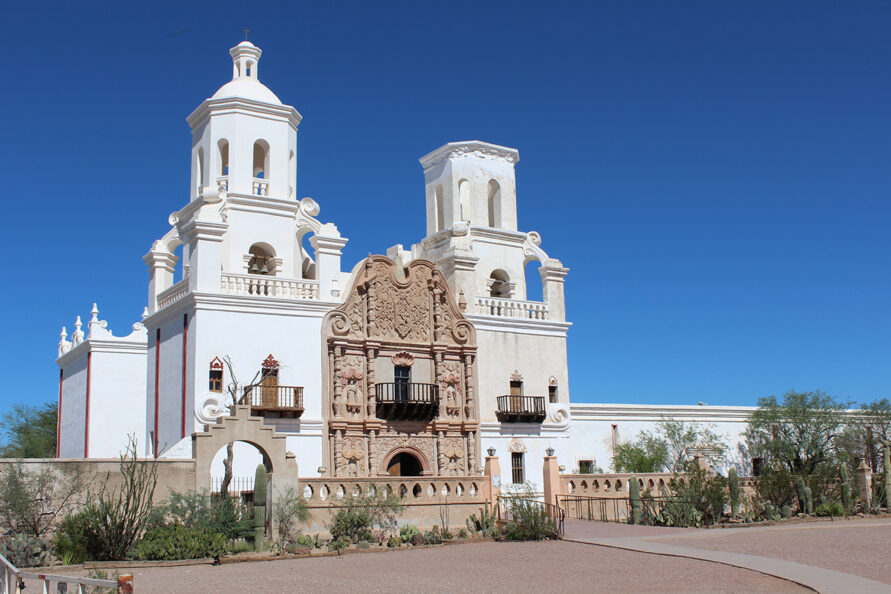
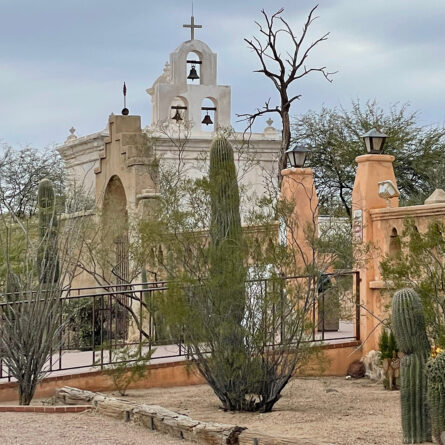
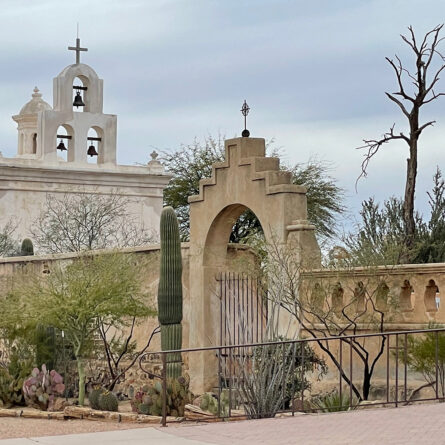

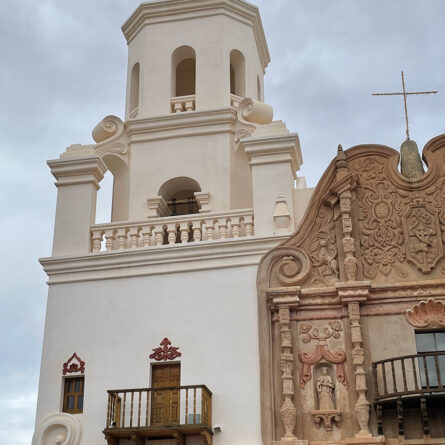
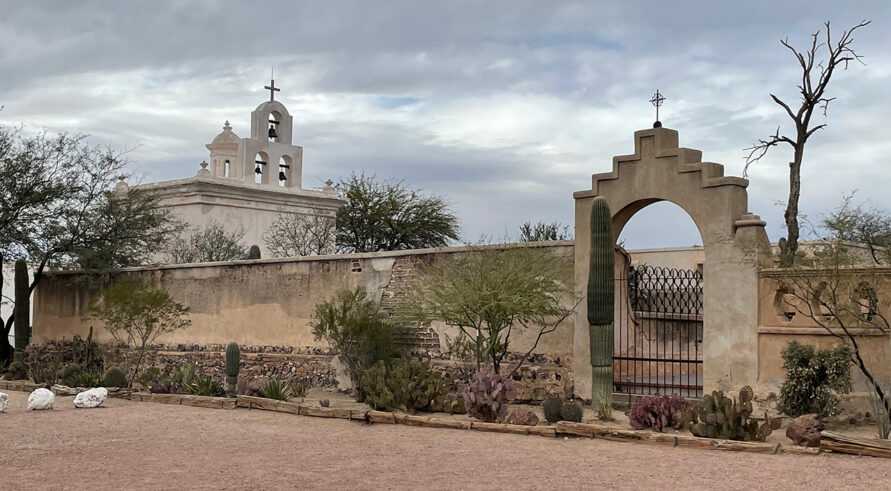


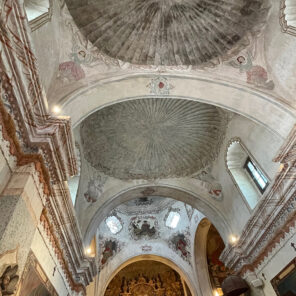
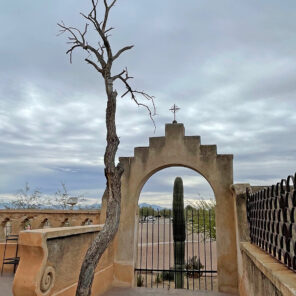
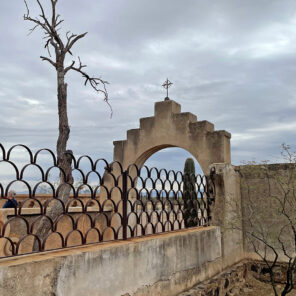
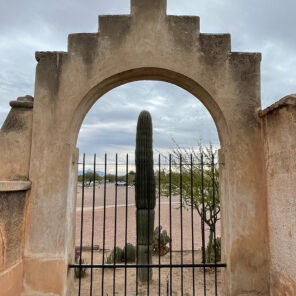
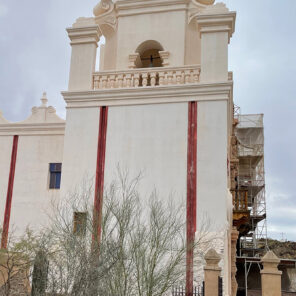
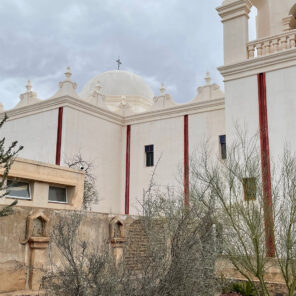
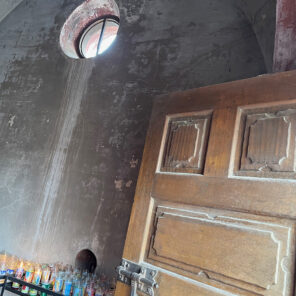
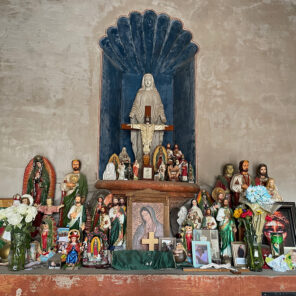
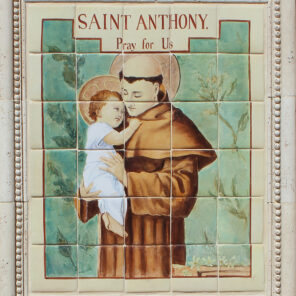
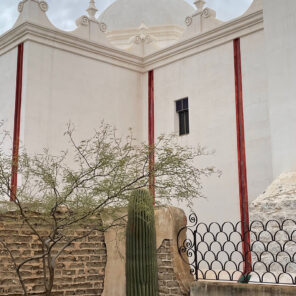
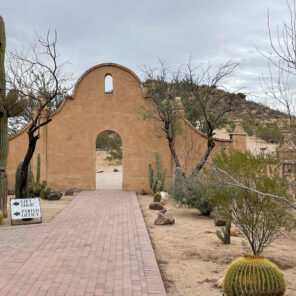
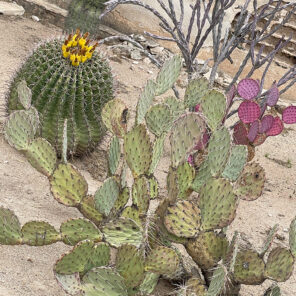
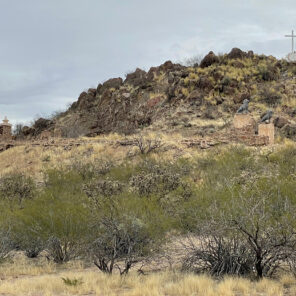

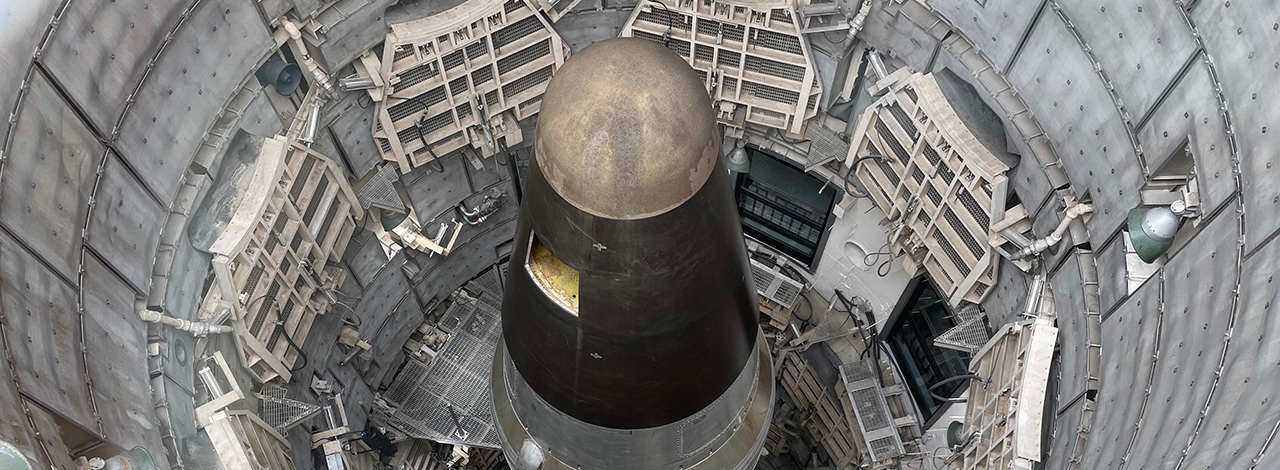




Comments are closed here.